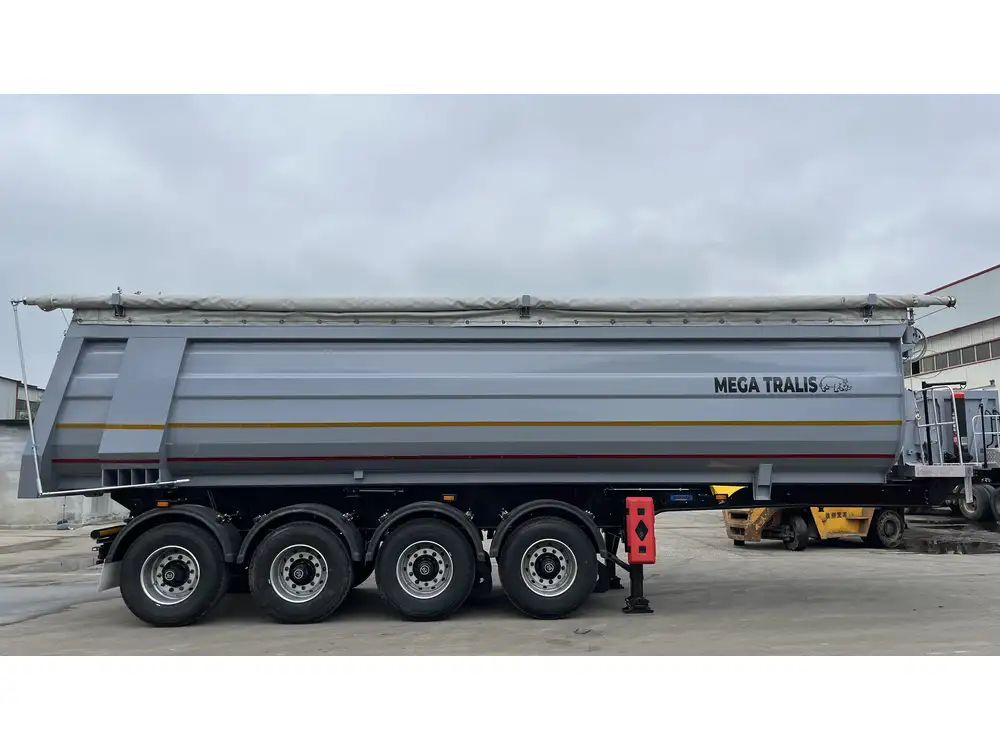When it comes to transportation logistics, understanding the dimensions of equipment is critical for optimizing load efficiency and compliance with regulatory standards. One key asset in the freight industry is the semi-trailer, and in this context, we focus on the specific inquiry: what is the width of a 24-foot semi trailer?
This article delves deep into the characteristics and specifications of 24-foot semi trailers, ensuring to address the complexities associated with their dimensions, design, and application in various logistics scenarios.
Dimensions of a 24-Foot Semi Trailer
Standard Width Specifications
The standard width of a 24-foot semi trailer typically adheres to regulations governing commercial transportation. Most semi trailers, including the 24-foot variant, possess a width of 8.5 feet (102 inches). This width is critical for navigating standard roadways and ensuring compliance with Department of Transportation (DOT) regulations.

Table: Standard Dimensions of a 24-Foot Semi Trailer
| Dimension | Measurement | Notes |
|---|---|---|
| Length | 24 feet (288 inches) | Commonly used for regional haulers |
| Width | 8.5 feet (102 inches) | Maximum allowable width in the U.S. |
| Height | 13.5 feet (162 inches) | Typical height; varies by model |
| Volume | Approximately 1,500 cu ft | Varies depending on trailer type |
Variations and Customization
While the above specifications reflect the most common configuration, it is important to note that manufacturers often offer customized trailers tailored to specific operational needs. For example, certain specialized trailers may be wider than standard specifications to accommodate unique loads, especially in industries dealing with oversized agricultural or construction equipment.
Regulatory Considerations

Federal and State Regulations
Maintaining compliance with width regulations is paramount for transportation companies. In the United States, the Federal Highway Administration regulates the maximum allowable width for trucks on interstate highways at 8.5 feet. However, states may enforce stricter rules, especially when it comes to certain routes and the handling of specialized shipments.
- Overwidth Permits: For vehicles exceeding the standard width. It may be necessary to obtain an overwidth permit, which ensures road safety and compliance.
- Weight Limitations: Alongside width, it is essential to consider weight limits, which vary by jurisdiction and vehicle type.
Applications of 24-Foot Semi Trailers
Understanding the width of a 24-foot semi trailer is only part of the equation. This dimension directly influences its operational capabilities and suitability for various cargo types.
Common Uses
Regional Transport:
- Designed for local deliveries where maneuverability is key.
- Ideal for transporting goods like consumer products, food items, and general freight.
Specialized Cargo:
- Certain configurations may be adapted to transport specialized loads, requiring considerations for width and height.
Construction and Landscaping:
- 24-foot semi trailers can carry a range of supplies, including heavy machinery or large pallets of building materials.

Advantages of 24-Foot Semi Trailers
- Versatility: Suitable for a wide range of industries, making them a preferred choice for many logistics operators.
- Maneuverability: Their shorter length compared to standard semi-trailers improves handling in tight spaces.
- Economical: Often more fuel-efficient compared to larger trailers, leading to lower operational costs.
Factors Influencing the Width Configuration
The design and functionality of semi trailers can significantly vary. The width disparity could influence various factors in transportation operations:
Trailer Design
- Flatbed Trailers: Utilized for transporting heavy machinery, construction materials, and oversized goods, these trailers may have specific designs that affect their effective width.
- Enclosed Trailers: Often used for shipping sensitive goods, they maintain a standard width but may have additional modifications for load stability.

Load Dynamics
Understanding how width affects load balance is essential:
- Weight Distribution: A wider trailer provides a stable base for transporting heavy loads, reducing the risk of tipping or instability during transport.
- Loading and Unloading: The width can impact how easily goods can be loaded or unloaded, particularly in constrained environments.
Conclusion: The Significance of Width in Semi Trailer Design
In summary, the width of a 24-foot semi trailer, typically measuring 8.5 feet (102 inches), plays a crucial role in its operational capability and regulatory compliance. Understanding the importance of trailer dimensions offers manufacturers and users clear insights into how best to utilize this integral piece of logistics equipment.
As industries evolve and demands change, manufacturers continue to innovate, offering a range of customizable features that impact width and overall dimensions. Tailoring trailers to fit specific needs not only enhances performance but also ensures that companies can efficiently meet the challenges of contemporary transport logistics.
Frequently Asked Questions (FAQs)
What are the maximum allowable dimensions for a semi trailer?
- The typical maximum total width is 8.5 feet, whereas overall length can vary, with standard configurations often extending up to 53 feet.
How does the width affect fuel efficiency?
- Wider trailers can create more drag, potentially impacting fuel consumption; however, precise engineering mitigates these effects.
What are the advantages of using a 24-foot semi trailer over larger options?
- Enhanced maneuverability and versatility are key advantages, especially in urban settings where space is limited.
Can I customize the width of a semi trailer?
- Yes, many manufacturers offer customization options; however, ensuring compliance with local regulations is essential.
What types of freight are best suited for a 24-foot semi trailer?
- The versatility of the trailer allows for transport of various goods, but it’s particularly effective for regional deliveries of smaller load quantities.
Understanding trailer widths and their implications provides a foundation for optimal logistics planning, ensuring that operators can make informed decisions that align with their business goals.



